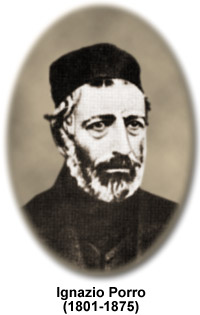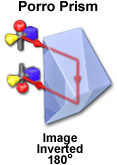- HOME
- Primary Sources
- The Invention of the Sewing Machine by Grace Rogers Cooper
- The Sewing Machine Combination or Sewing Machine Trust
- Vibrating Shuttle Sewing Machines History
- Running-Stitch Machines
- Button-Hole Machines
- Book-Sewing Machines
- Glove-Sewing Machines
- Shoe Making Machines
- Needles
- Shuttles & Bobbins
- Bobbin Winders
- Thread Tension Regulators
- Feed Reversing Mechanism
- Attachments and Accessories
- MANUFACTURERS AND DEALERS IN SEWING MACHINES
- BIOGRAPHICAL SKETCHES
- PATENTS
- DATING FRISTER & ROSSMANN
- FRISTER & ROSSMANN
- BRITISH Machines
- BRITISH Machines Part 1
- BRITISH Machines Part 2
- BRADBURY & Co.
- BRITANNIA SEWING MACHINE COMPANY
- BRITISH SEWING MACHINE COMPANY Ltd
- ECLIPSE MACHINE COMPANY
- ESSEX
- GRAIN E. L. Ltd
- W. J. HARRIS & C0.
- IMPERIAL SEWING MACHINE CO.
- JONES & CO.
- LANCASHIRE SEWING MACHINE Co
- SELLERS W.
- SHEPHERD, ROTHWELL & HOUGH
- VICKERS
- WEIR'S
- AMERICAN Machines
- AETNA SEWING MACHINE
- AMERICAN B.H.O. & SEWING MACHINE COMPANY
- AMERICAN SEWING MACHINE COMPANY
- AVERY SEWING MACHINE COMPANY
- BARTHOLF SEWING MACHINE COMPANY
- BARTLETT SEWING MACHINE COMPANY
- BARTRAM & FANTON Mfg. Co.
- BECKWITH SEWING MACHINE Co.
- BOYE NEEDLE COMPANY
- BURNET, BRODERICK & CO.
- CONTINENTAL MANUFACTURING Co.
- DAVIS SEWING MACHINE CO.
- DEMOREST SEWING MACHINE MANUFACTURING CO.
- DOMESTIC SEWING MACHINE COMPANY
- DORCAS Sewing Machine
- EMPIRE SEWING MACHINE COMPANY
- EPPLER & ADAMS SEWING MACHINE COMPANY
- GOODSPEED & WYMAN S.M. Co.
- GREIST MANUFACTURING COMPANY
- GROVER & BAKER SMC
- HEBERLING RUNNING STITCH GUAGING MACHINE Co.
- HIBBARD, SPENCER, BARTLETT & Co.
- HODGKINS MACHINE
- HOWE MACHINE COMPANY (Elias)
- HOWE S. M. C. (Amas)
- N. HUNT & CO.
- HUNT & WEBSTER
- JOHNSON, CLARK & CO.
- LEAVITT & CO.
- LEAVITT SEWING MACHINE COMPANY
- LEAVITT & BRANT
- LENOX MANUFACTURING COMPANY
- NETTLETON & RAYMOND SEWING MACHINES
- NEW HOME SEWING MACHINE COMPANY
- NICHOLS & BLISS
- NICHOLS & Co.
- NICHOLS, LEAVITT & CO.
- REMINGTON SEWING MACHINE COMPANY
- REECE BUTTON HOLE MACHINE COMPANY
- SINGER
- SMYTH MANUFACTURING COMPANY
- UNION BUTTONHOLE and EMBROIDERY MACHINE COMPANY
- UNION BUTTON-HOLE MACHINE COMPANY
- UNION BUTTON SEWING MACHINE COMPANY
- TABITHA Sewing Machine
- WARDWELL MANUFACTURING COMPANY
- WATSON, WOOSTER & Co.
- WEED SMC
- WHEELER & WILSON
- WHITE SEWING MACHINE COMPANY
- WILLCOX & GIBBS
- WILSON SEWING MACHINE COMPANY
- CANADIAN Machines
- GERMAN Machines
- Deutsche Nähmaschinen-Hersteller und Händler
- Development in industrial sales
- About innovations on sewing machines
- Bielefeld Nähmaschinenfabriken
- Nähmaschinen in Leipzig
- ADLER
- ANKER-WERKE A.G.
- BAER & REMPEL
- BEERMANN CARL
- BELLMANN E.
- BIESOLT & LOCKE
- BOECKE
- BREMER & BRÜCKMANN
- CLAES & FLENTJE
- DIETRICH & Co.
- DÜRKOPP
- GRIMME, NATALIS & Co.
- GRITZNER
- HAID & NEU
- HENGSTENBERG & Co.
- JUNKER & RUH
- KAISER
- LOEWE & Co. / LÖWE & Co.
- MANSFELD
- MÜLLER CLEMENS
- MUNDLOS
- OPEL
- PFAFF
- POLLACK , SCHMIDT & CO.
- SCHMIDT & HENGSTENBERG
- SEIDEL & NAUMANN
- SINGER NÄHMASCHINEN IN GERMANY
- STOEWER
- VESTA
- WERTHEIM
- WINSELMANN
- ITALIAN Machines
- HUNGARIAN / MAGYAR Machines / Varrógépek
- AUSTRIAN Machines
- BELGIAN Machines
- FRENCH Machines
- RUSSIAN Machines
- SWEDISH Machines
- SWISS Machines
- NATIONAL & INTERNATIONAL EXHIBITIONS
- 1850 NEW YORK - FAIR
- 1850 BOSTON
- 1851 LONDON
- 1851 NEW YORK - FAIR
- 1852 NEW YORK - FAIR
- 1853 NEW YORK - FAIR
- 1853 BOSTON
- 1853 DUBLIN
- 1853-4 NEW YORK
- 1854 MELBOURNE
- 1855 NEW YORK - FAIR
- 1855 PARIS
- 1856 BOSTON
- 1856 NEW YORK - FAIR
- 1860 STUTTGART
- 1861 MELBOURNE
- 1862 LONDON
- 1866 ALTONA
- 1869 BOSTON
- 1873 VIENNA World Exhibition
- 1876 PHILADELPHIA
- 1884 LONDON Health Exhibition
- 1884 LONDON International and Universal Exhibition
- 1885 LONDON South Kensington Exhibition
- 1887 LONDON American Exhibition
- 1889 PARIS Exposition Universelle
- 1893 LONDON The Sewing and Domestic Machines' Show
- CURIOSITIES
- READING ROOM
- SEWING MACHINE MUSEUMS - Links
- USEFUL LINKS
Ignazio Porro
(1801-1875)

Ignazio Porro’s primary contribution to optics was an innovative prism image erecting system that is commonly used in binoculars and stereomicroscopes, though he also invented and improved a number of other scientific instruments. Today Porro is often considered to have been ahead of his time in many ways, the Italian engineer receiving little acclaim or monetary compensation for his innovative devices, which only came to be fully appreciated and widely utilized after his death. In fact, when Ernst Abbe attempted to patent binoculars containing his own prism erecting system in 1893, the physicist was very surprised to find that someone else had invented and patented the design decades earlier. Despite his own intense work in the field of optics, Abbe had never heard of the inventor, a telling indication of Porro’s difficulties.
Porro was the son of an Italian engineer-lieutenant and, like his father, joined the military, serving initially as a cadet in the artillery and working his way up to a major in the reserve before he retired from service in 1842. Throughout many of his years in the military, Porro surveyed lands and developed improvements for the geodetic instruments he utilized. His innovations helped make surveying a more expedient and accurate endeavor. Around 1839, Porro began referring to his instruments as tachymeters and coined the term tachymetry. Porro’s interest in scientific devices carried over into his civilian life after he left the military, and he originally opened a workshop in Turin, Italy, but moved to Paris, where he opened the Institut Technomatique, five years later. During his years in Paris, Porro was very productive. In 1847, he developed an improved asymmetrical camera lens that enhanced image quality and a few years later he became the first person to promote the use of tele-lenses to photograph remote edifices. It was also during this time that Porro invented his direct-vision prism image erecting system, which he patented in both France and England in 1854.

A right-angle prism oriented so that light enters and exits through the hypotenuse face is often referred to as a Porro prism. When a single Porro prism is utilized, the incident light beam undergoes two internal reflections after it enters the prism and is deviated by 180 degrees upon exiting, resulting in an image that is inverted top to bottom, but is not reversed right to left.
In order to form erect reversed images with the Porro prism, two of the prisms may be doubled together orthogonally (a design patented by Porro) to first invert and then reverse light beams. The twin prisms fold the light path of an optical system and also displace the image both horizontally and vertically by half the length of the hypotenuse in each direction. Porro prisms are widely utilized in stereomicroscopes to produce upright images.
Porro reportedly built primarily monocular instruments with his pioneering prism system, and even presented two telescopes he designed to Emperor Napoleon III of France in 1855. Yet, despite the novelty of Porro’s prism-based inventions, the scientific community did not receive them with much enthusiasm, and he was never able to produce the designs on a large scale. Though technical issues likely were largely responsible for Porro’s lack of professional success, it has been suggested that his reputation among other men of science was problematic at times, which may also have been a factor in some of his troubles. For example, in the late 1850s, Henri Hureau de Sénarmont, a renowned French mineralogist, issued a report that contained a denunciation of both Porro’s methods and character, information that could have discouraged others from purchasing Porro’s instruments.
In his later years, Porro returned to Italy, where he taught tachymetry in Florence and then surveying theory in Milan. He continued to build instruments during this period and founded multiple workshops, none of which were very successful. When Porro died in 1875, he was experiencing serious financial hardship and could hardly have thought that one day his name would be famous in the world of optics. Nevertheless, Porro prism binoculars, which were first conceived in the mid-1800s, were refined by other scientists and became one of the most popular varieties of binoculars by the dawn of twentieth century. In fact, the instruments, which enjoy simplicity of design as well as greater depth perception and a wider field-of-view than many other binocular designs, continue to be sold around the globe in the early twenty-first century.
http://micro.magnet.fsu.edu/optics/timeline/people/porro.html
Ignazio Pòrro
Ignazio Porro, nome completo Paolo Ignazio Pietro Porro (Pinerolo, 25 novembre 1801 – Milano, 8 ottobre 1875),
Pòrro, Ignazio. - Topografo e costruttore di strumenti di misurazione (Pinerolo 1801 - Milano 1875). Ufficiale del genio nell'esercito piemontese fino al 1842, si occupò di importanti rilievi topografici; svolse in seguito, prima a Torino poi a Parigi, un'intensa attività di costruttore di strumenti di misurazione; tornato in Italia nel 1861, insegnò celerimensura a Firenze, poi a Milano, dove fondò (1865) la Società Filotecnica. Tra i molti dispositivi ottici e topografici da lui ideati e costruiti, particolare importanza hanno il cannocchiale distanziometrico anallattico (1850), dal quale derivò il tacheometro, il dispositivo invertitore a prismi per il raddrizzamento delle immagini nel cannocchiale astronomico, il cleps, la macchina a dividere circolare per incidere graduazioni su cerchi per strumenti tipografici, il prisma squadro. A P. è anche sostanzialmente dovuto quel complesso di metodi topografici noto sotto il nome di celerimensura o tacheometria. Fra i suoi molti scritti sono da ricordare: La tachéométrie (1854) e le Applicazioni della celerimensura alla misura generale parcellaria ed altimetrica in Italia (1862).
Enciclopedia TRECCANI on line
from wikipedia
Ignazio Porro, nome completo Paolo Ignazio Pietro Porro (Pinerolo, 25 novembre 1801 – Milano, 8 ottobre 1875), è stato un ottico e topografo italiano.
Il nome di Porro è normalmente associato al sistema di prismi da lui inventato verso il 1850 e che è utilizzato nella costruzione dei binocoli. Però molti altri suoi contributi all'ottica e alla topografia (celerimensura) furono molto importanti. Divenne nel 1836 maggiore del Genio militare del Regno di Sardegna. Qualche anno dopo eseguì, su richiesta ed a spese di Giuseppe Médail, primo assertore e propugnatore del Traforo ferroviario del Frejus, il rilievo topografico del territorio compreso fra Bardonecchia e Modane. Nel 1840 progettò il tracciato della tratta ferroviaria tra Genova e Sale di Alessandria e relativa diramazione verso la città di Pavia. Porro partecipò successivamente alla fondazione della Tecnomasio, e poi fondò nel 1865 la Filotecnica, che si sviluppò sotto la guida del suo allievo Angelo Salmoiraghi, diventando Filotecnica-Salmoiraghi.
A lui è intitolato l'Istituto Tecnico Industriale di Stato (I.T.I.S.) della città di Pinerolo e a lui era intitolata la Società Italiana di Fotogrammetria "Ignazio Porro".